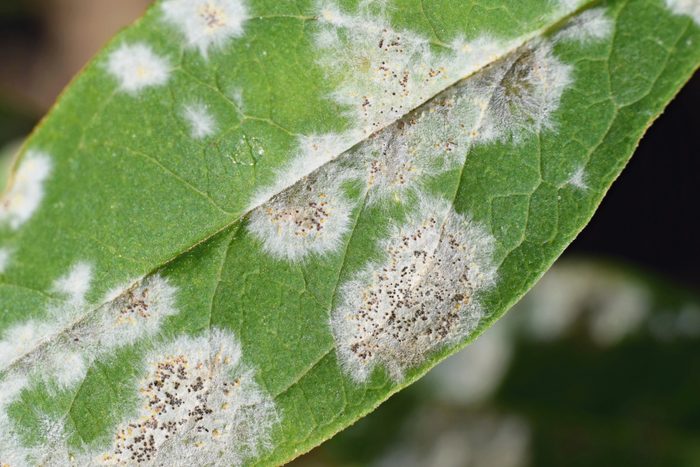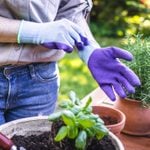How To Get Rid of Powdery Mildew on Plants

Powdery mildew often shows up on plants later in the year. But its presence is nothing to panic about! Your plant will likely survive it.
Our editors and experts handpick every product we feature. We may earn a commission from your purchases.
I couldn’t wait to dig up some of my dad’s peonies to plant in my own garden. I don’t know where he got them, but when I dug them up, they had already been in his garden for close to 40 years. And now they’ve been in my garden for more than 20 years!
In every one of those 60 years, late in the season, powdery mildew showed up on the leaves. Does the powdery mildew kill peonies? Obviously, it hasn’t killed these. And I don’t expect it ever will.
On This Page
What Is Powdery Mildew?
Powdery mildew is a common fungal disease that shows up on several common plants, including lilacs, peonies, bee balm and zinnias. Occasionally it infects indoor plants like begonias and African violets.
While it may look bad, powdery mildew rarely kills its host plant. Sometimes, it’s mistaken for another plant disease fungus called downy mildew.
How To Spot Powdery Mildew on Plants
Outdoors, powdery mildew is usually seen later in the growing season. It appears as a white or grayish colored powdery coating on the leaves. Occasionally, this may cause the leaves to dry and drop off. On houseplants, it also appears as a white or grayish film on the leaves.
How To Get Rid of Powdery Mildew in the Garden
Once you see powdery mildew in your garden, it can be difficult to completely get rid of it. Fortunately, this isn’t usually a problem. If your plants become infested every year, like my peonies, treat them with a fungicide.
Some fungicides are systemic. Apply these around the root zone of the plant. Then it’s taken in by the roots and goes up through the plant. Purdue University suggests Bonide Infuse Systemic Disease Control.
Some fungicides are sprayed on the leaves, like Safer Brand Ready to Use Garden Fungicide. You may have to apply it more than once if rain or irrigation systems wash it off the leaves.
If you decide to use a fungicide, proceed with caution.
- Verify the plant you’re treating has been infected with powdery mildew and not some other plant disease.
- Confirm the product is labeled for controlling powdery mildew and safe for the plant you’re spraying.
- Follow the directions on the label.
- Safely dispose of unused fungicide according to local ordinances.
How To Prevent Powdery Mildew
Because powdery mildew rarely kills the plants it infects, most gardeners don’t worry too much about it. But there are some things you can do to prevent it from getting out of control. Stacey Hirvela from Proven Winners ColorChoice Shrubs offers three suggestions:
- In autumn, remove and discard all fallen foliage. Powdery mildew spores overwinter on fallen leaves and are readily able to re-infect the plant the following spring.
- Avoid letting water from irrigation systems hit the foliage of plants likely to get powdery mildew. Powdery mildew thrives on foliage that’s regularly wet and dry.
- Improve air circulation around the plant. Open up the center with some selective pruning and prune away neighboring plants.
Hirvela also suggests choosing plant varieties labeled as resistant to powdery mildew. These plants may still show some signs of the disease, but often won’t get as infected as other plants.
What About Powdery Mildew on Indoor Plants?
Lisa Eldred Steinkopf, author of Bloom: The Secrets of Growing Flowering Houseplants Year-Round, uses Neem Oil when she sees powdery mildew on a houseplant. She also keeps a ceiling fan on in her plant room all the time, keeping air moving and reducing high humidity.
She also advises avoiding big temperature fluctuations around houseplants. That, along with high humidity and no air movement, provides the perfect environment for powdery mildew to grow.



